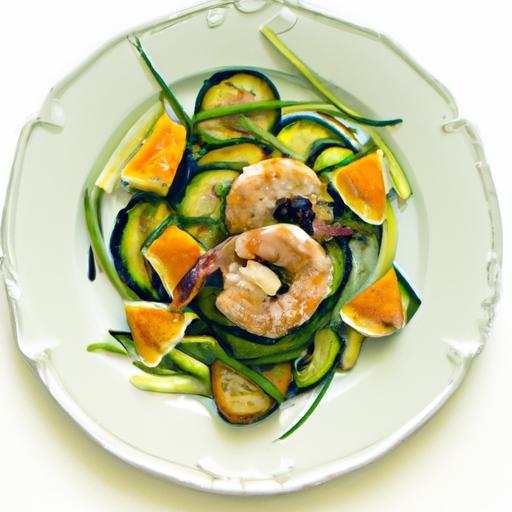In the culinary world, some of the most cherished dishes are born not from premium cuts, but from humble, inexpensive pieces of meat that many overlook. Unlocking tenderness from these modest cuts is both an art and a science-a journey where patience, technique, and a touch of creativity transform plain proteins into mouthwatering delights. Whether you’re a seasoned cook or a curious novice, understanding how to elevate cheap cuts can open a treasure trove of flavors and textures, proving that great taste doesn’t have to come with a hefty price tag. Join us as we delve into the secrets of coaxing tenderness and turning budget-friendly ingredients into unforgettable meals.
Unlocking Tenderness: Mastering Flavor and Texture in Affordable Cuts
Unlocking tenderness is an art that transforms inexpensive cuts into culinary delights bursting with flavor and succulence. Whether it’s a humble chuck roast or flavorful pork shoulder, understanding the nuances of meat selection, preparation, and cooking methods elevates your dishes beyond expectations. My journey began with experimenting on budget-friendly cuts, discovering that patience and the right techniques could coax out juicy, tender masterpieces perfect for family meals or special occasions.
Prep and Cook Time
- Preparation: 20 minutes
- Marinating/Brining: 4-12 hours (optional but recommended)
- Cooking: 3 to 6 hours, depending on method and cut
Yield
- Serves 6-8 people
Difficulty Level
- Medium – Requires planning and slow cooking techniques
Ingredients
- 3 lbs beef chuck roast (well-marbled for tenderness)
- 1 cup beef broth, low sodium
- 1/2 cup apple cider vinegar
- 2 tbsp brown sugar
- 1/4 cup soy sauce
- 4 garlic cloves, minced
- 1 tbsp smoked paprika
- 1 tbsp cracked black pepper
- 2 sprigs fresh rosemary
- 1 large onion, sliced
- 2 tbsp olive oil
- Salt to taste
Instructions
- Prepare the marinade: In a bowl, whisk together beef broth, apple cider vinegar, soy sauce, brown sugar, garlic, smoked paprika, and black pepper. This blend combines acidity and umami that help break down tough fibers.
- Marinate the beef: Place beef chuck roast in a large resealable bag or shallow dish and pour marinade over it. Ensure the meat is fully submerged or evenly coated. Refrigerate for 4-12 hours for maximum tenderness.
- Sear for flavor: Remove meat from marinade (reserve marinade), pat dry, and season with salt. Heat olive oil in a heavy skillet over medium-high heat. Sear the roast for 3-4 minutes per side until a rich brown crust forms, locking in juices.
- Slow cook: Transfer seared roast, sliced onion, rosemary, and reserved marinade to a slow cooker or heavy Dutch oven. Cook on low heat for 4-6 hours or until the meat easily shreds with a fork. This gentle transformation tenderizes every fiber.
- Reduce the sauce: Once cooked, remove meat and keep warm. Pour cooking liquid into a saucepan and simmer over medium heat for 10-15 minutes until slightly thickened. Adjust seasoning with salt as needed.
- Serve and garnish: Slice or shred the tender roast, plate it alongside your favorite sides, and drizzle with the luscious reduced sauce. Garnish with fresh rosemary or parsley for color and aroma.
Tips for Success
- Unlocking tenderness starts with choosing cuts rich in connective tissue, like chuck, brisket, or pork shoulder-these benefit most from slow cooking and marinating.
- Don’t rush the marinating process. Acidic and enzymatic components soften fibers and enhance depth of flavor. Overnight is best.
- If you lack a slow cooker, a heavy covered skillet at very low oven temperature (275°F/135°C) works wonderfully for hours.
- For a smoky twist, add a splash of liquid smoke or smoked salt to your marinade.
- Leftover roast makes fantastic sandwiches or tacos-serve with pickled onions and fresh cilantro.
Serving Suggestions
Visual appeal and balance elevate this hearty meat dish. Serve atop creamy mashed potatoes or a bed of buttery polenta, accompanied by roasted seasonal vegetables. A sprinkle of fresh herbs brings contrast and brightness. Add pickled veggies or a tangy slaw on the side to cut through the richness and create a harmonious plate.

| Nutrient | Per Serving |
|---|---|
| Calories | 350 kcal |
| Protein | 42 g |
| Carbohydrates | 6 g |
| Fat | 15 g |
For more tips on choosing economical meats and innovative cooking ideas, explore our budget-friendly meat recipes. For a deeper understanding of connective tissue science, visit the Serious Eats guide.
Q&A
Q&A: Unlocking Tenderness – Transform Cheap Cuts Into Delights
Q1: Why should I bother cooking with cheap cuts of meat?
A: Cheap cuts often get overlooked because they’re tougher and less glamorous than their pricier counterparts. But they’re a hidden treasure trove of flavor! When cooked properly, these cuts can transform into melt-in-your-mouth delights, packing a rich, hearty taste that expensive cuts sometimes lack. Plus, they’re a budget-friendly way to enjoy gourmet meals.
Q2: What makes cheap cuts tough, and how can I fix that?
A: Toughness comes from more connective tissue and muscle fibers that do more work in the animal’s body. The key to unlocking tenderness lies in breaking down those tissues through slow heat, moisture, and time. Braising, slow roasting, or stewing are magical techniques that turn these “workhorse” cuts into succulent wonders.
Q3: Which cheap cuts are best for tenderizing, and why?
A: Cuts like chuck, brisket, flank, and skirt are fantastic candidates. They have intense beefy flavors but need longer cooking to soften. Shoulder cuts from pork or lamb are similarly fantastic for slow cooking. These cuts respond beautifully to low and slow methods, emerging tender and full of character.
Q4: Can marinades help tenderize cheap cuts?
A: Absolutely! Marinades with acidic ingredients like vinegar, citrus, or wine can gently break down tough fibers before cooking. Enzymatic marinades using pineapple or papaya can also work wonders. Just be careful not to over-marinate, or the meat’s texture may become mushy instead of tender.
Q5: Is there a fast way to tenderize tough meat?
A: While slow cooking is the gold standard, you can speed up tenderness by physically breaking down the muscle fibers-think pounding with a meat mallet or scoring the surface. Using a pressure cooker also reduces cooking time dramatically while still producing tender results. But remember, nothing beats patience for deep flavor and texture.
Q6: How can I know when the meat is perfectly tender?
A: Tender meat should yield easily to a fork and almost fall apart under gentle pressure. Visually, the surface will be moist and glistening. The internal fibers will feel soft rather than chewy. Taste-testing during the cooking process is your best guide-trust your senses!
Q7: What are some creative dishes that showcase tenderized cheap cuts?
A: Think hearty beef stew bubbling with root vegetables, richly spiced pulled pork sandwiches, or aromatic braised lamb shanks with herbs. You can also get playful with tacos filled with shredded brisket or a slow-cooked ragu over pasta. The possibilities are endless once you unlock the potential of these humble cuts.
Q8: Any final tips for turning cheap cuts into culinary delights?
A: Embrace patience, use complementary herbs and spices to amplify flavor, and always remember: great cooking transforms modest ingredients into memorable experiences. Unlocking tenderness is an art, and with a little love, even the cheapest cut can shine like a star on your table.
Closing Remarks
In the world of cooking, the true magic lies not in the price tag but in the hands that transform humble ingredients into unforgettable experiences. By unlocking tenderness in cheap cuts, we open a gateway to flavor treasures once overlooked, proving that culinary delight is accessible to all. So next time you stand before that lesser-known piece of meat, remember: with patience, technique, and a touch of creativity, even the simplest cut can become a masterpiece. Embrace the journey from budget to brilliance, and savor the delicious rewards that follow.








